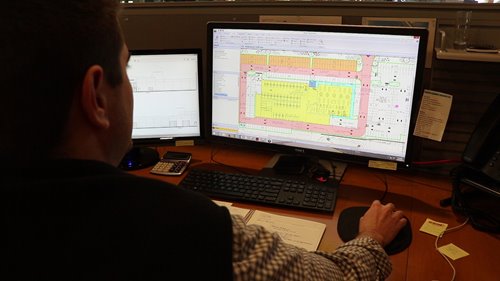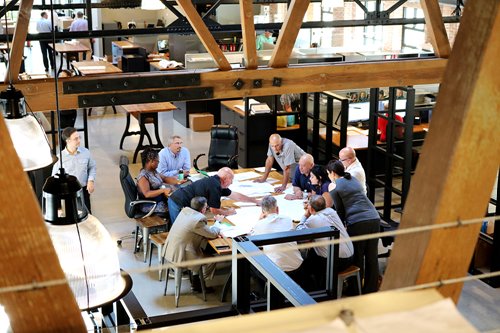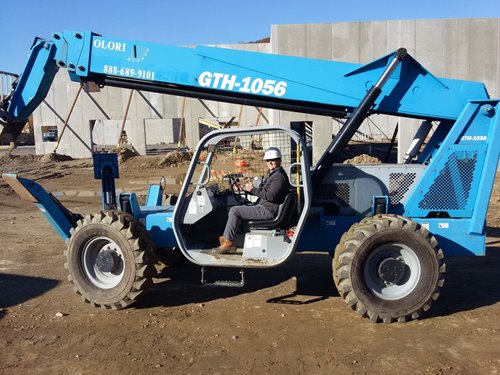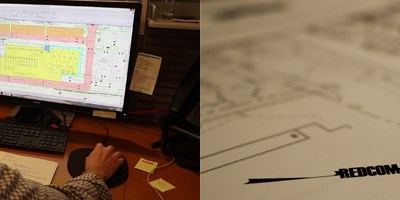Inside the Estimate
As a business owner looking for a commercial builder, there are many factors to take into consideration during your search. You want a reputable company with an impressive portfolio. You want someone you can trust and work well with. And of course, you’re looking for a fair price.
So, how do construction companies develop their pricing? With so many components involved in the construction of a facility, it is often a complex process. Let’s take you “inside the estimate” for a closer look.
Understanding estimating
Traditionally, in a bid/build construction model, an owner will commission a civil engineer and an architect to design its site and facility, and then put it out to general contractors for bidding. While countless projects have been successfully completed this way, an alternative method is becoming increasingly popular.
The design/build construction model allows for business owners to work with engineers, architects, AND estimators during the design phase, saving them time and money at the beginning of the process.
For example, REDCOM Design & Construction LLC employs these professionals in-house, and they work closely with the sales department as new prospects come through the pipeline. As soon as a prospect enters the design stage, estimators are already gearing up to start working on a price.
“We get in there pretty early,” explained Vincent Calabresi, Director of Estimating for REDCOM. “As soon as the architecture and engineering concepts are underway, we start our estimate.”
This is another benefit of the design/build model – the department is able to start work on a proposal with minimal information from the design team.

“With just one floor plan and an elevation, we can put together some numbers,” said Javier Costa, an estimator for REDCOM. “Basically, we just need to know the materials we’re going to use, with a general sense of the construction approach and some feedback from the architects.”
While they are able to begin an estimate with minimal information, eventually the design team needs to share a full concept with the estimating department so they can price the job in detail.
“Every estimate basically has the same process,” explained Patrick Kelmartin, an estimator for REDCOM. “I usually start with the site, which includes components like clearing demolition, earth work, utilities, fencing, landscaping, and site lighting. The same goes for the building, it just has a longer checklist.”
By using an estimating program (REDCOM uses ProEst), estimators can “draw” over floor plans and site concepts, specifying different materials and finishes to get the most specific measurements. Using historical databases and subcontractors as resources, they can ensure that prices are put together based on accurate market rates.

While the estimators aren’t always the ones that determine materials and finishes for the buildings, they do play an integral part in how those decisions are made.
“If we’re estimating a job for a brand, like Audi or Porsche, their finishes are pre-determined,” said Calabresi. “If it’s for owners that don’t have anything particular in mind, we ask questions to get to know them and their tastes. Just by meeting owners at their offices, you can usually tell what they’re looking for and what they’re into.”
Duration of the estimating process
While the estimating process as a whole can last as long as the design stage of a project, developing a single estimate is less time-consuming.
“One estimate, depending on the complexity of the job, can take a week,” said Calabresi. “We’ll go and present it to the client, knowing there will be changes. Whether they want different finishes, to change the design, or adjust the pricing, we take that feedback and go back to the drawing board to resume the process again.”
The process can be broken down into three steps:
- Developing takeoff drawings to determine how many components the building has
- Adjusting bid prices for every item, as necessary
- Developing a formal proposal to present to the owner

While the proposals are extremely important to the client, the takeoff drawings are also an integral component in showing where the pricing comes from.
“The on-screen takeoffs are really cool because they give the client a visual representation of what the words in the proposal mean,” said Calabresi. “These drawings are broken down by major categories, making it easy to see where the ceilings are, what kind of carpet is being used and where, etc. It’s a nice visual aid for a client.”
Estimating’s ongoing role
So, once a contract is signed and the project is turned over to the construction team, estimating’s role in that job is complete, right?
Actually, that’s not the case. The estimating department plays an important role in helping project management with bidding and purchasing, since it has been so involved with the project up to this point.

“We know the most about the project, so we stay on and do the bidding of the subcontractors for the job,” said Calabresi. “We’re constantly tracking our budgets versus actual cost, so we can tell the project manager in real time what’s going on and why it’s over or under budget.”
While a design is normally completed by the time the contract is signed, there is always a chance things will change during the construction process.
“There’s troubleshooting that we sometimes perform,” explained Calabresi. “Some of us become involved during construction because there will be things that change from the initial estimate.”
Valuable, but often overlooked
Estimators are invaluable assets to construction companies. But despite their value, they often get overlooked – unless something goes wrong.

“You’re only going to get recognized if you do the job wrong,” said Kelmartin.
That’s not to say that it isn’t rewarding for those individuals when their estimates get turned into signed contracts for the company.
“You have a lot of weight on your shoulders,” explained Calabresi. “Our glory comes when the building gets built. Getting the contract signed and ‘ringing the bell’ is nice. When we finally see it completed, we can say, ‘Oh, we did that!’ And that’s a great feeling.”

